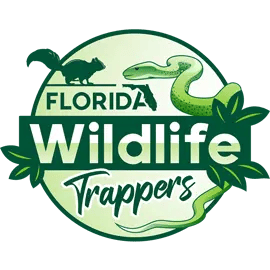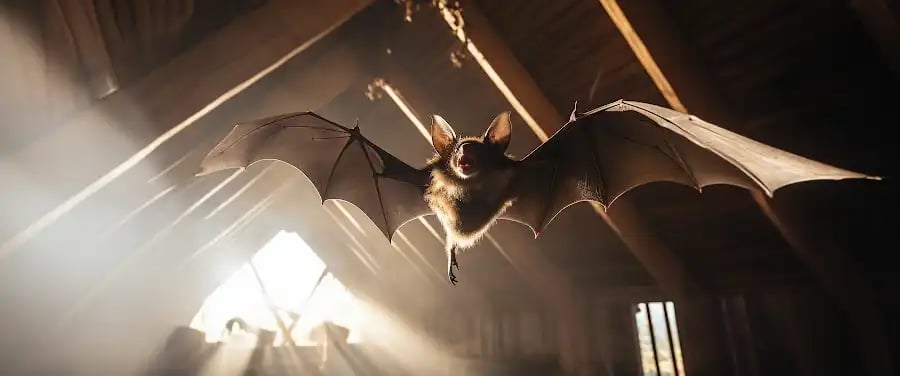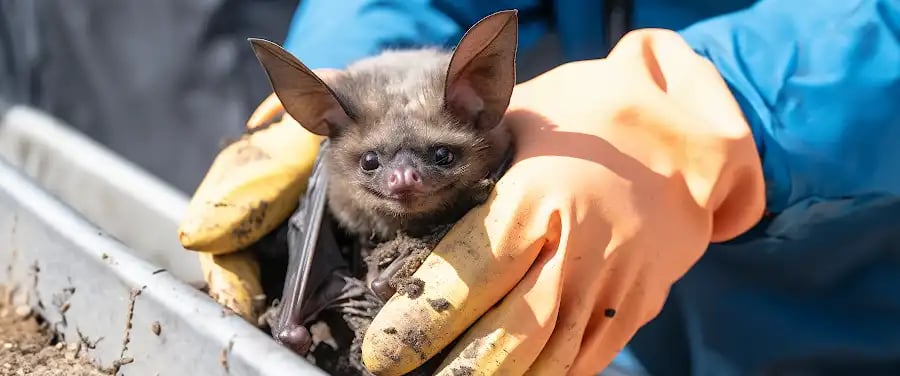
From the tiniest, bustling city gardens to the vast, leaf-strewn expanses of rural woodland, one fluffy-tailed creature is a frequent star of the show: the squirrel. These tenacious little mammals have managed to claim their territory across the globe, running, leaping, and darting across landscapes with an unparalleled zest for life. Their cheeky antics and endearing behavior have charmed many of us, but how much do we truly know about them?
Besides their adorable looks, squirrels hold a fascinating portfolio of trivia and quirks that are sure to amaze and entertain. From their puzzling behaviors, mind-boggling facts, to surprising characteristics, there is much to explore in the world of squirrels. Hiding in those bushy tails are surprising truths and intriguing mysteries eagerly awaiting your discovery. After all, these creatures are not just another pretty face in the panorama of wildlife.
And so we embark on this journey, dedicated to understanding squirrels, specifically the species that call central Florida their home. Armed with curiosity and an appreciation for wildlife, we will navigate this expedition, shedding light on often overlooked attributes and poignant features of these agile creatures. This unique blend of casual exploration and scientific understanding seeks to bridge gaps, highlight connections, and foster an enhanced appreciation for these stunning mammals. With that in mind, are you ready to dive into the world of squirrels and ask the important question: “What are squirrels?” So, without further ado, let’s start unravelling the squirrel’s tale.
What do Squirrels Look Like?

Whether scampering across lawns or hanging from tree branches, central Florida’s squirrels are a familiar sight in our daily lives. But have we ever taken the time to really observe them? Understanding squirrels starts with knowing what they look like.
Squirrels are small to medium-sized rodents, typically recognized by their bushy tails and agile movements. Their physical attributes are specifically adapted to their lifestyle – they are true masters of survival in the wild. Squirrels come in different varieties, or species, which present a few different physical characteristics. These differences primarily include size and color variations depending on the species.
In Florida, the most commonly seen squirrels are the Eastern Gray Squirrel and the Southern Flying Squirrel. As the name suggests, the Eastern Gray Squirrel is predominantly gray with white underparts while the Southern Flying Squirrel is brownish color with a cream or white belly.
To further help you understand, below is a table displaying the comparison between the two species.
| Eastern Gray Squirrel | Southern Flying Squirrel | |
|---|---|---|
| Average Size | 16-20 inches | 8-10 inches |
| Weight | 1-1.5 pounds | 1-4 ounces |
| Primary Color | Gray | Brown |
| Secondary Color | White | Cream or white |
| Habitat | Forests, Parks | Woodlands, Forest edges |
Both species have certain similarities such as large eyes, long toes with sharp claws, and a long, bushy tail which they use for balance while moving around trees and jumping from one branch to another.
Squirrels’ color variations serve more than just aesthetic purposes. Their coloration helps them blend into their environment and protect themselves from potential predators. It also works as a signal, allowing individual squirrels to communicate with each other.
Understanding squirrels is interesting, isn’t it? And this is just the beginning. Their physical attributes are impressive but they also have some pretty remarkable behaviors that help them survive in the wild.
Speaking of which, let’s delve into the world of squirrel behavior. Ever wondered why squirrels behave the way they do? It’s an intriguing mixture of instinct, adaptation, and intelligence. Stay with us for the next section, How Do Squirrels Behave? to learn more.
How Do Squirrels Behave?

When we think of squirrels, visions of these nimble creatures acrobatically leaping from branch to branch or industriously burying acorns may instantly pop into our minds. But there’s much more to squirrel behavior than just the typical hoarding or nesting instinct we commonly observe. Let’s take a closer look at how these fascinating creatures behave and navigate their social structure.
Exploration of Fascinating and Quirky Squirrel Behaviors
Squirrels are promisingly expressive, displaying a range of quirky yet intriguing behaviors that speak volumes about their aptitudes for survival and social interaction. Central Florida’s squirrels, for instance, know to shimmy up tall, thin tree trunks, making difficult for predators to follow them. They also have a remarkable way of talking to each other using complex vocalizations and tail signals. Did you know that these furry little creatures actually play hide-and-seek with their food? They often pretend to bury a nut to trick would-be thieves, a behavior called “deceptive caching.”
Moreover, squirrels can run up to 20 miles per hour and leap 10 feet, making them quite the agile athletes of the rodent world. This ability helps them escape predators and seek refuge in their nests.
Insight into the Social Structure of Squirrels
Despite their solo appearance, squirrels are not as solitary as we might think. They live in a complex social structure that revolves around their dwelling place, called dreys. Squirrels engage in social grooming, an activity in which they comb each other’s fur to remove dirt and parasites, strengthening social bonds in the process.
To better understand squirrel behavior, let’s see this table illustrating key aspects of their lifestyle:
| Activity | Frequency | Purpose |
|---|---|---|
| Food Caching | Daily | To store food for lean times |
| Vocalizations | As necessary | Communication |
| Social Grooming | Regularly | To build social bonds and maintain hygiene |
Squirrels, in their fascinating complexity, behave much like other mammals, exhibiting strategic thinking, social bonding, and a sense of community.
What is the Mating Behavior of Squirrels?
The cycle of life for squirrels has its own unique rhythm. The mating behavior of squirrels is characterized by an interesting display of the pursuit of females by males, usually during the end of the winter season. A female in heat releases pheromones that attract males in the vicinity, resulting in hot pursuit.
Pregnancy Period and the Birth Process in Squirrels
Once mated, the female squirrel has a gestation period of about 44 days. She then gives birth to 2-6 young ones, also known as pups or kits. The birthing process happens inside the drey, where the newborns are nursed and cared for.
The Role of Males and Females in Rearing Young Ones
Once the young ones are born, the role of the male ends. Female squirrels are the primary caregivers, feeding, grooming, and instructing the young in essential survival skills like foraging and avoiding predators. By ten weeks, the young squirrels can fend for themselves, but they may still stick around their mother’s home range for a while.
In conclusion, our understanding of squirrels comes from observing their behaviors, decoding their social structures, and tracking their mating cycles. Each of these facets furnishes insight into the rich world of these nimble creatures.
In the next section, we will explore another interesting aspect of these creatures: their diet. So, we move on to the next question – What Do Squirrels Eat?
What Do Squirrels Eat?

When you think of squirrels, you might picture them scampering around with acorns, but the diet of these small mammals goes way beyond this common nut. Regarding the squirrel diet, variety reigns. Their diet depends not only on the season, but also on the geographical location and species of the squirrel.
As relatives of chipmunks and prairie dogs, most of the nearly 300 species of squirrels worldwide consume a mix of nuts, seeds, fruits, bark, and sometimes even insects or bird eggs when the situation calls for it. Now, let’s elaborate on this diet comparison across species, taking a closer look at squirrels in central Florida.
The two common squirrel species in this region, known as the Eastern Gray Squirrel and the Southern Flying Squirrel, lean heavily towards different diet preferences. Eastern Grays, bigger in size, typically lean towards harder nuts like pecans and hickory, while smaller Southern Flying Squirrels prefer softer fare like fruits and fungi. Interestingly, the Southern Flying Squirrel also has a fondness for insects and other small animals, providing a protein boost to their diet.
Squirrels are opportunistic omnivores, meaning their diet changes according to season and availability. In autumn, for example, they buddy up with oak trees for the rich acorn harvest, storing surplus nuts for the winter months. Spring sees them munching on tree buds, while summer brings a buffet of fruits and berries.
However, an important thing to remember is that not all meals are beneficial for squirrels, especially when it comes to human food. Often, the effects of human food on squirrels can lead to health issues. It is particularly detrimental because it lacks the nutritional elements essential to them, but contains high levels of salt, sugar, and preservatives.
Understanding squirrels and their dietary needs is essential, especially if you live in an area with a large squirrel population. A well-fed squirrel may indeed be a happy one, but remember — not all snacks are created equal. Human food may be more harmful than helpful to these cute critters.
In central Florida, as in many other places, squirrels bring so much life and energy to our natural landscapes. It’s important that we understand how to interact with them responsibly. But, as we study their diet, you might be left wondering, where exactly do squirrels live? Next, we’ll delve into their habitats.
Where Do Squirrels Live?

In Central Florida, squirrels have made their homes primarily in densely wooded areas, parks, and suburban neighborhoods with plenty of trees. The natural habitat of squirrels often consists of different types of environments based on their species’ preferences. Florida is well-known for its thriving squirrel population, with species like the Eastern Gray Squirrel and the Southern Flying Squirrel calling it home.
Squirrels are versatile when it comes to building homes or nests. Some prefer tree cavities, while others construct a “drey,” a type of nest assembled with twigs, leaves, and moss high in the tree branches. These nests not only provide shelter against extreme weather but are strategically placed to evade predators.
Squirrels have a fascinating quality: they exhibit territory behavior. Often, you’ll notice a furry creature scampering up a tree, demonstrating its agile nature. This indicates that they’re marking their area, and while they allow others into their territory, they still keep an eye out to ensure they’re not robbed of their hard-earned acorns.
How Do Squirrels Adapt to Urban Environments?
As urbanization increases, squirrels have shown remarkable adaptability. They have learned to thrive in our backyards, city parks, and even bustling downtown areas. It’s interesting to note that squirrels bridge the gap between wildlife and urban inhabitants.
Urban squirrels face many challenges, including traffic, less available green space, and exposure to harmful chemicals and pollutants. Despite these hurdles, they have managed to coexist with humans quite successfully, developing new behaviors and survival tactics. For instance, they’ve learned to cross roads safely, figure out bird feeders, and even recognize when humans present them with food.
However, the presence of squirrels in urban environments has a significant impact on both humans and the environment. On one hand, some may find these critters charming, contributing to the urban ecosystem’s biodiversity. On the other hand, they can cause concerns for homeowners and gardeners, as they have been known to dig up gardens, chew wiring, and raid bird feeders. According to a study, squirrels can also influence the structure of urban forests.
Understanding the habitat preferences, lifestyle, and adaptability to urban environments gives us an insight into squirrel behaviors.
Conclusion
Darkening as dusk sets in, the first image that comes to our minds is a quirky, bushy-tailed character oscillating whimsically through the trees – our charming, enigmatic friend, the squirrel. Addressing our inherent curiosity, we have spent time understanding squirrels, becoming familiar with their eccentric habits and behaviors. As we run through the pages of their hidden life novel, their world unfolds like a mystical journey, filled with odd but fascinating insights.
Squirrels are not just another amusing character from cartoons or a playful denizen of our backyard, they play a crucial role in our ecosystem. They are nature’s efficient gardeners, as they unknowingly plant thousands of trees each year. Forgetful of their buried acorns, they contribute significantly to our forestry. However, squirrels are more than their ecological significance. Their quirky behaviors, such as their playful chasing or charming interactions, contribute immensely to our understanding and appreciation of these unique creatures.
Their world is both engaging and educative, teaching us vital life lessons. They teach us about the importance of preparation, teamwork, and adapting to changing circumstances. It’s admirable to watch them hustle, storing food for harsh winters, or enchanting to witness their collaboration in distracting predators.
In conclusion, squirrels are more than just frisky, nut-chasing creatures. They are an essential component of our ecological arrangement and provide stimulating insights into their little-known lifestyles. Exploring about squirrels and learning about their world is a journey filled with amazing surprises. Our understanding of these creatures is perpetually evolving, prompting us to continue our pursuit of their intriguing lives.
The journey doesn’t end here, there’s still plenty left to uncover about these fascinating, bushy-tailed beings. Let’s keep exploring and continue our quest of deciphering the enigmatic life of squirrels.



